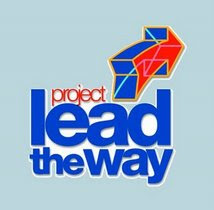New Grant Opportunity
HP Innovations in Education --Secondary School Districts – USA
For over 10 years, Hewlett Packard has offered PLTW schools the opportunity to obtain computers, printers and other hardware at a discount. Hewlett Packard is committed to education and is continuing to partner with Project Lead The Way not only by offering affordable technology but also by offering grant opportunities through special initiatives such as the HP Innovations in Education grant program. This program is open to schools across the country and is a competitive RFP process. PLTW schools have a great opportunity to obtain this comprehensive technology package and enhance their ability to deliver PLTW courses, courses that HP recognizes as an outstanding curriculum that can be maximized by the technology and training included in this special grant opportunity. Please see official announcement below:
HP Innovations in Education
Building on 5 years of experience with the HP Technology for Teaching grant program, HP has just announced a new grant opportunity entitled HP Innovations in Education. HP seeks proposals from school districts in the US that are pursuing the use of technology to enhance academic success in secondary school (middle school and/or high school) math and science. Each award, valued at more than $270,000, will consist of equipment, cash and professional development. Proposals that will be considered should describe how technology will be used to enable innovations in four areas – Leadership Capacity, Digital Learning Environments, the Secondary Student Design & Research Experience, and High-Tech Career Awareness. Visit www.hp.com/go/hpiie-usa for more information and to download the Request for Proposals. Applications are due March 30th.
HP seeks proposals from school districts pursuing the use of technology to enhance academic success in secondary school (middle school and/or high school) math and science. Proposals that will be considered will describe how technology will be used to enable innovations in four areas:
· Leadership Capacity – creating a network of school administrators and key teachers who implement innovative approaches to curriculum, instruction, and the use of technology to enhance math/science learning.
· Digital Learning Environments – using technology to fundamentally redesign the learning experience in ways that lead to increased student engagement and academic success; can include innovations in online learning, virtual worlds, gaming for learning, and simulations.
· The Secondary Student Design & Research Experience – making math and science real and relevant by involving secondary students in design and research challenges that address real needs in society; can include local and/or global service learning.
· High-Tech Career Awareness – engaging administrators, teachers, and students in ways that increase awareness and interest in high-tech college
degree programs and careers.
Please feel free to share this exciting news with Superintendents or Assistant Superintendents of Curriculum and Instruction. Here are the key facts:
· HP plans to fund approximately 25 secondary school districts in the USA.
· Each grant is valued at more than $270K in equipment, professional development, and cash.
· Proposals are due March 30th, 2009.
· Applicants are invited to visit www.hp.com/go/hpiie-usa to download the Request for Proposals, which describes all the important details

.JPG)

